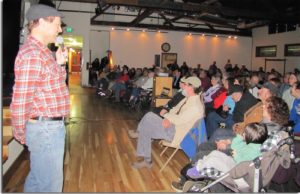Owls and Woodpeckers of the Okanogan Highlands and Beyond

Paul Bannick’s presentation took us on a visual and auditory exploration of local habitats, through the owls and woodpeckers that most define and enrich these places. His photographic field report celebrates the ways the lives of these two iconic birds are intertwined with one another, and their role as keystone and indicator species for their environment. The Highland Wonders audience was immersed in the sights and sounds of forest, grassland, and desert, and in the entertaining and informative details of Paul’s narrative.